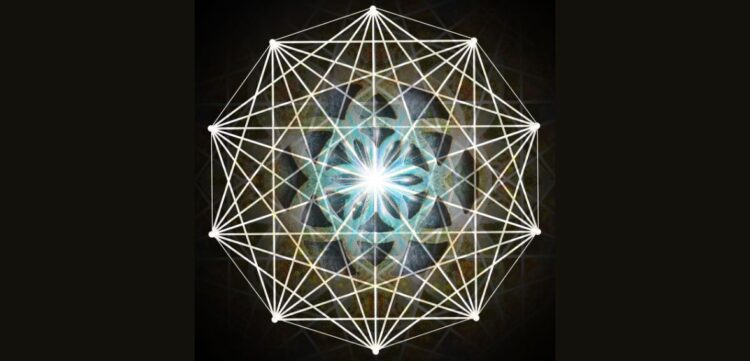Sacred geometry is a term that refers to the geometrical laws which create everything in existence. It encompasses the belief that the universe is structured by mathematical constants and that geometry exists inherently in all things, both natural and human-made. This ancient understanding considers that specific shapes and patterns hold symbolic and spiritual meanings that go beyond their mere structural form. Sacred Geometry in Modern Architecture illustrates how these timeless principles are applied in contemporary design, blending ancient wisdom with modern aesthetics.
Historical Background
The history of sacred geometry can be traced back to ancient civilizations that recognized the profound importance of geometry in the cosmos. From the Egyptians, who used it in the construction of pyramids, to the Greeks, who incorporated it into their philosophies and architectural marvels, sacred geometry has been a fundamental aspect of human understanding and expression. These ancient cultures understood that certain geometric patterns and proportions, known as sacred geometry symbols and meanings, were not only aesthetically pleasing but also resonated with the natural order of the universe, reflecting a deep connection between the physical and spiritual worlds.
Ancient Egypt
In ancient Egypt, geometry was pivotal in the construction of temples and pyramids. The Egyptians’ understanding of the golden ratio and the alignment of structures with celestial bodies indicate their advanced knowledge of sacred geometry.
Ancient Greece
Greek philosophers such as Pythagoras and Plato furthered the study of sacred geometry. Pythagoras, known for his theorem, explored the relationships between numbers and geometric shapes, leading to the development of the Platonic Solids. Plato described the universe in terms of geometric forms, believing that these shapes were the building blocks of reality.
The Renaissance
During the Renaissance, there was a revival of interest in sacred geometry, with artists like Leonardo da Vinci and architects such as Filippo Brunelleschi applying these principles in their works. This period saw a synthesis of art, science, and spirituality, reflecting a deep understanding of the interconnectedness of all things.
The Symbols of Sacred Geometry

Sacred geometry is rich with symbols, each carrying specific meanings and used in various contexts to convey profound truths.
1. The Flower of Life
The Flower of Life is a complex figure composed of multiple evenly-spaced, overlapping circles. It is said to represent the cycle of creation and the interconnectivity of all life. This symbol is found in many cultures and is believed to hold the blueprint for the universe, including the basis for all mathematical and spatial forms.
2. The Tree of Life
The Tree of Life is a symbolic representation of the interconnectedness of all life and the universe. It is central to the Kabbalistic tradition and is used to represent the flow of divine energy from the spiritual realm into the physical world. It consists of ten interconnected spheres (sephiroth) that map out a path for spiritual ascent.
3. Metatron’s Cube
Metatron’s Cube is a complex geometric figure that includes all five Platonic Solids within it. Named after the archangel Metatron, this symbol is believed to be a diagram of the energetic field around all matter. It represents balance and harmony in the universe.
4. The Platonic Solids
The Platonic Solids are five geometric shapes that are considered the building blocks of the universe. They are the tetrahedron, hexahedron (cube), octahedron, dodecahedron, and icosahedron. Each of these shapes is associated with one of the classical elements: fire, earth, air, ether, and water, respectively.
5. Sri Yantra
The Sri Yantra is a mystical diagram used in the Hindu tradition, consisting of nine interlocking triangles that surround a central point known as the bindu. It represents the cosmos and the human body and is used as a tool for meditation and worship to achieve spiritual enlightenment.
6. Spiral
The spiral is a universal symbol found in many cultures and natural forms, such as galaxies, shells, and hurricanes. It represents growth, evolution, and the cyclical nature of life. The Fibonacci spiral, which follows the Fibonacci sequence, is particularly significant in sacred geometry.
7. The Seed of Life
The Seed of Life is a symbol consisting of seven overlapping circles. It is considered the blueprint of the universe, containing the basis for the design of everything in existence. It is often used as a symbol of creation and fertility.
8. Golden Ratio (Phi)
The golden ratio, represented by the Greek letter phi (φ), is an irrational number approximately equal to 1.618. This ratio is found in many natural phenomena and is used in art and architecture to create aesthetically pleasing compositions. It is believed to represent the divine proportion and harmony in the universe.
9. Merkaba
The Merkaba is a star tetrahedron, a three-dimensional eight-pointed star made from two intersecting tetrahedrons. It is said to represent the human body, spirit, and the interconnectedness of all life. In meditation, it is used as a vehicle for spiritual transformation and ascension.
10. Fibonacci Sequence
The Fibonacci sequence is a series of numbers where each number is the sum of the two preceding ones, often appearing in nature, such as the branching of trees, the arrangement of leaves on a stem, and the pattern of various fruits and flowers. It is closely related to the golden ratio and is seen as a representation of growth and harmony.
11. Vesica Pisces
The Vesica Pisces is a shape formed by the intersection of two circles of the same radius, with the center of each circle on the circumference of the other. It represents duality and the creation of new life, symbolizing the interaction between the physical and the spiritual realms.
Sacred Geometry in Nature

Sacred geometry is inherently present in nature, from the smallest particles to the grandest structures. It is visible in the patterns of flowers, the branching of trees, the spiral shells of mollusks, and even in the formation of galaxies. The intricate symmetry of a snowflake, the logarithmic spirals found in sunflowers, and the perfect hexagons of honeycombs are all manifestations of sacred geometry. These natural patterns and shapes reflect the underlying order and harmony of the universe, demonstrating that the same principles that govern the cosmos also influence the natural world around us. By observing these patterns, one can gain a deeper appreciation for the elegance and coherence of nature.
The concept of sacred geometry symbols and meanings is not only limited to aesthetic beauty but also embodies a deeper understanding of life’s interconnectedness.
Sacred Geometry in Everyday Life
Sacred geometry is not confined to ancient history or nature; it permeates modern life and can be found in many everyday objects and practices. From art and architecture to personal symbols and rituals, these geometric patterns bring harmony, balance, and beauty into our lives.
Sacred Geometry Across Cultures and Religions
Different cultures and religions have recognized and utilized sacred geometry throughout history. While the symbols and interpretations may vary, the underlying principles remain consistent, reflecting a universal understanding of the geometric nature of the cosmos.
Applications of Sacred Geometry Among Various Disciplines
Sacred geometry finds applications in various fields, including art, architecture, science, and spirituality. Its principles guide the creation of harmonious and balanced designs, reflecting the interconnectedness of all things.
Art and Design
Artists use sacred geometry to create compositions that resonate with the viewer on a deeper, subconscious level. The balance and harmony achieved through geometric patterns evoke a sense of order and beauty.
Architecture
Architects incorporate sacred geometric principles to design buildings that are not only aesthetically pleasing but also structurally sound and harmonious with their surroundings. These designs often promote a sense of well-being and spiritual connection.
Science
In science, sacred geometry is seen in the structure of molecules, the arrangement of crystals, and the patterns of biological organisms. Understanding these geometric principles can lead to advancements in various scientific fields.
Spiritual Practices
Sacred geometry is used in spiritual practices to facilitate meditation, healing, and personal transformation. The geometric patterns serve as tools for focusing the mind and accessing higher states of consciousness.
The Influence of Sacred Geometry Principles in Architectural Designs
Sacred geometry has a profound influence on architectural designs, from ancient structures to modern buildings. Architects use these principles to create spaces that are in harmony with the natural world and resonate with the human spirit.
Key Principles
- Proportion and Scale: The use of the golden ratio and other geometric proportions ensures that buildings are aesthetically pleasing and harmonious.
- Symmetry and Balance: Symmetrical designs create a sense of order and stability.
- Alignment: Aligning buildings with celestial bodies or geographical landmarks connects the structure to the cosmos and the natural environment.
- Pattern and Repetition: Repeating geometric patterns create a sense of unity and coherence.
Famous Buildings Created According to the Sacred Geometry
Several famous buildings around the world have been designed using the principles of sacred geometry, showcasing the timeless appeal and effectiveness of these geometric laws.
The Great Pyramid of Giza
The Great Pyramid of Giza in Egypt is one of the most well-known examples of sacred geometry in architecture. Its proportions are based on the golden ratio, and its alignment with celestial bodies reflects a deep understanding of the cosmos.
The Parthenon
The Parthenon in Athens, Greece, is another example of sacred geometry in architecture. The use of the golden ratio and the precise proportions of its columns and spaces create a sense of balance and harmony.
Notre-Dame Cathedral
Notre-Dame Cathedral in Paris, France, incorporates sacred geometric principles in its design. The use of the Vesica Pisces in its windows and the overall proportion of the structure create a harmonious and spiritual space.
The Taj Mahal
The Taj Mahal in India is renowned for its symmetrical beauty and precise geometric proportions. The use of the golden ratio and intricate geometric patterns reflect the principles of sacred geometry.
The United Nations Headquarters
The United Nations Headquarters in New York City is a modern example of sacred geometry in architecture. Its design incorporates geometric proportions and alignments that symbolize unity and harmony among nations.
Conclusion
Sacred geometry offers a profound understanding of the interconnectedness of all things, from the smallest particles to the grandest structures. Its principles have been used throughout history in art, architecture, science, and spirituality to create harmony, balance, and beauty. The concept of sacred geometry is rooted in the belief that certain geometric patterns and shapes are fundamental to the universe, symbolizing the intrinsic order and unity of the cosmos.
These patterns, such as the Flower of Life, Metatron’s Cube, and the Golden Ratio, are considered to hold deep spiritual significance and are believed to reflect the underlying fabric of reality. By studying and applying sacred geometry, individuals can tap into this universal harmony, fostering a sense of connection with the natural world and the divine.
In modern architecture and design, sacred geometry continues to inspire and guide the creation of spaces that resonate with the natural world and the human spirit. Architects and designers incorporate sacred geometry symbols and meanings into their work to enhance the aesthetic appeal and energetic quality of their creations. This practice not only results in visually stunning structures but also in environments that promote well-being and spiritual growth.
By aligning with the principles of sacred geometry, contemporary design can achieve a balance between form and function, integrating beauty with purpose. Whether in the layout of a building, the design of a garden, or the composition of a piece of art, the application of sacred geometry symbols and meanings serves to remind us of our place within the greater whole, fostering a deeper appreciation for the interconnectedness of all life.
Frequently Asked Questions
What is sacred geometry, and why is it important?
Sacred geometry refers to the geometric patterns and shapes that are believed to underlie the structure of the universe. It is important because it represents the intrinsic order and harmony of the cosmos, influencing art, architecture, science, and spirituality throughout history.
How did ancient civilizations use sacred geometry in their architecture?
Ancient civilizations, such as the Egyptians and Greeks, used sacred geometry to design structures like the pyramids and temples. They employed geometric principles like the golden ratio and alignments with celestial bodies to create buildings that were both aesthetically pleasing and symbolically significant.
What are some common symbols in sacred geometry, and what do they represent?
Common symbols include the Flower of Life, Metatron’s Cube, and the Platonic Solids. These symbols represent various concepts such as creation, balance, and the fundamental building blocks of the universe, each holding deep spiritual and philosophical meanings.
How does sacred geometry manifest in nature?
Sacred geometry is evident in nature through patterns like the spiral of a galaxy, the branching of trees, and the structure of crystals. These natural forms reflect the same geometric principles found in sacred geometry, demonstrating the interconnectedness and harmony of the natural world.
How is sacred geometry applied in modern architecture and design?
In modern architecture and design, sacred geometry is used to create spaces that are in harmony with their surroundings and resonate with the human spirit. By incorporating geometric proportions, symmetry, and alignment, architects and designers enhance the aesthetic and energetic qualities of their creations, promoting well-being and spiritual connection.












